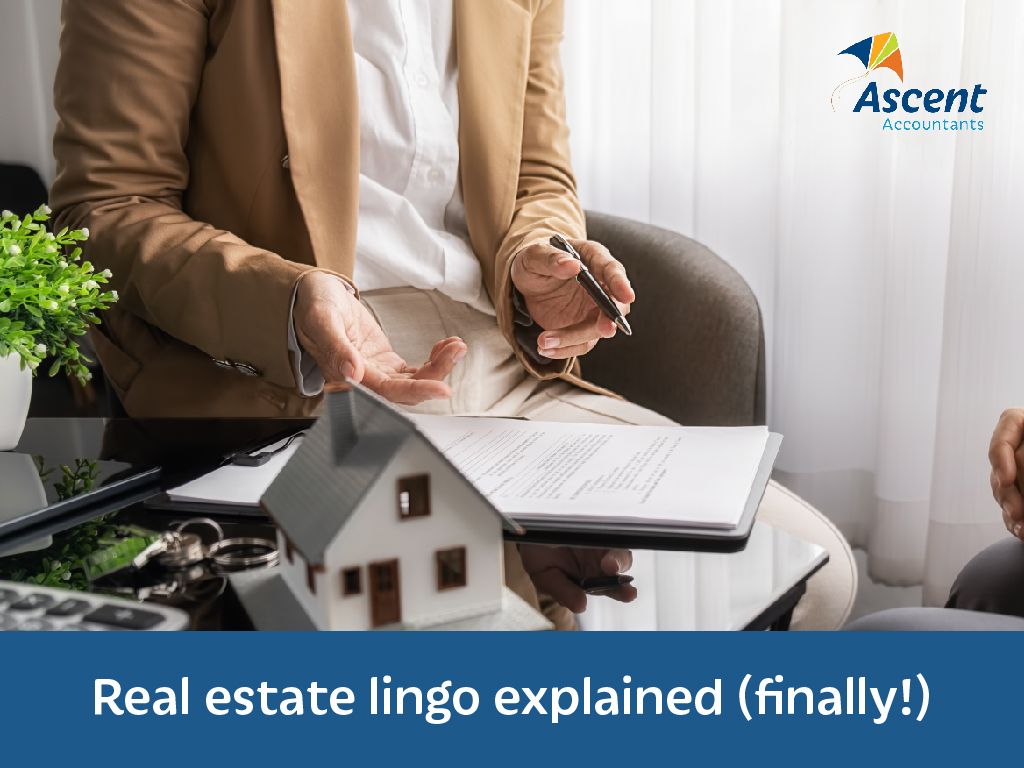Real estate lingo explained (finally!).

Real estate jargon can be confusing. We’d like to promise that it’s only confusing if you’re buying or selling for the first time, but even by the third or fourth time… It’s still confusing. Explaining financing, conveyancing, contracts, guarantors, and more are just some of the daily conversations real estate agents have with clients. And it’s no wonder — for many people, these terms are new, fueled with jargon, and a bit intimidating.
These terms (and more) are second nature for real estate agents and are often spoken with such confidence and authority that many people feel too embarrassed to ask what they mean. By learning some of the lingo, you’ll be more confident in your negotiations and general interactions when it comes to your property. Here are some to get you started:
1. Listing authority.
The Listing Authority is also known as a Selling Agency Agreement. It’s the written agreement whereby an agent is authorised by the seller to find a buyer for a particular property. This paperwork outlines property details, listing and commission fees, and how long the agreement will last.
2. Offer contract and acceptance contract.
These two documents are pivotal in transferring homeownership. Together, they form the legal contract of sale. A good agent will ensure you’re involved in every part of this process and have a clear understanding of each document and its respective components. These documents are highly detailed and there can be some negotiations or back-and-forth on different steps. So, be wary of agents who quickly flip to the signing areas without encouraging you to read through and ask questions.
3. Vendor versus buyer.
The vendor is selling the property and can be a person, a superannuation fund, a government entity or an enduring power of attorney. Meanwhile, the buyer is the person making an offer to purchase the property. If more than one person is buying, they need to decide if they will be purchasing as joint tenants or tenants in common.
4. Property chattels and fixtures.
Chattels and fixtures are items that remain at the property. Commonly seen chattels include a dishwasher and oven. However, if someone is moving overseas, they might also leave their fridge and washing machine, for example. Fixtures refer to permanent items like floor coverings, curtains, blinds, TV aerials, light fittings, solar panels, and so on. These are usually included by default, and it’s up to the seller to be clear with the agent about exceptions. For example, the seller might like to take the blinds with them if they know they can be fitted into their new home.
Further, anything left must be left in good working order. It’s not a time to use the property sale as a verge-side collection. For example, all the lights must work, and if the seller leaves a dishwasher, it must be functional.
5. Certificate of Title.
A Certificate of Title is an official land ownership record. This is a public record, which means anyone can order a copy of a Certificate of Title to find current ownership information for any property in Western Australia — even if they don't own it. A copy of this Certificate is given to buyers on the purchase of a property. It’s also used for checking current property ownership, planning applications, as well as research by real estate agents, investors, and home buyers.
6. Special conditions and annexures.
An annexure is an attachment to a document. When writing a contract, annexures are included in the special conditions. “Annexure A” is commonly used and covers areas such as ensuring the buyer has received a copy of the Certificate of Title, included items are in working order, the property is compliant with electrical requirements and more.
7. Guarantor.
If you’re buying for the first time and have limited credit history or finances (which is almost every first home buyer), you might ask a family member — usually a parent — to be a “guarantor” for you. The guarantor “guarantees” your mortgage by promising to repay the debt if you can’t afford to, so it’s a pretty big ask. You’re asking someone to be your fallback in the event that you can’t make your mortgage repayments. Despite being a very serious arrangement, it’s a very popular one — guarantor loans have jumped more than 70% in the last six years!
Thinking of buying? Sort your finances out first.
We’re familiar with these terms and a whole lot more because we know the first step to buyer success is organised finances — the bank knows it, too.
Contact us for bookkeeping services, tax accounting, and more.
Need help with your accounting?








